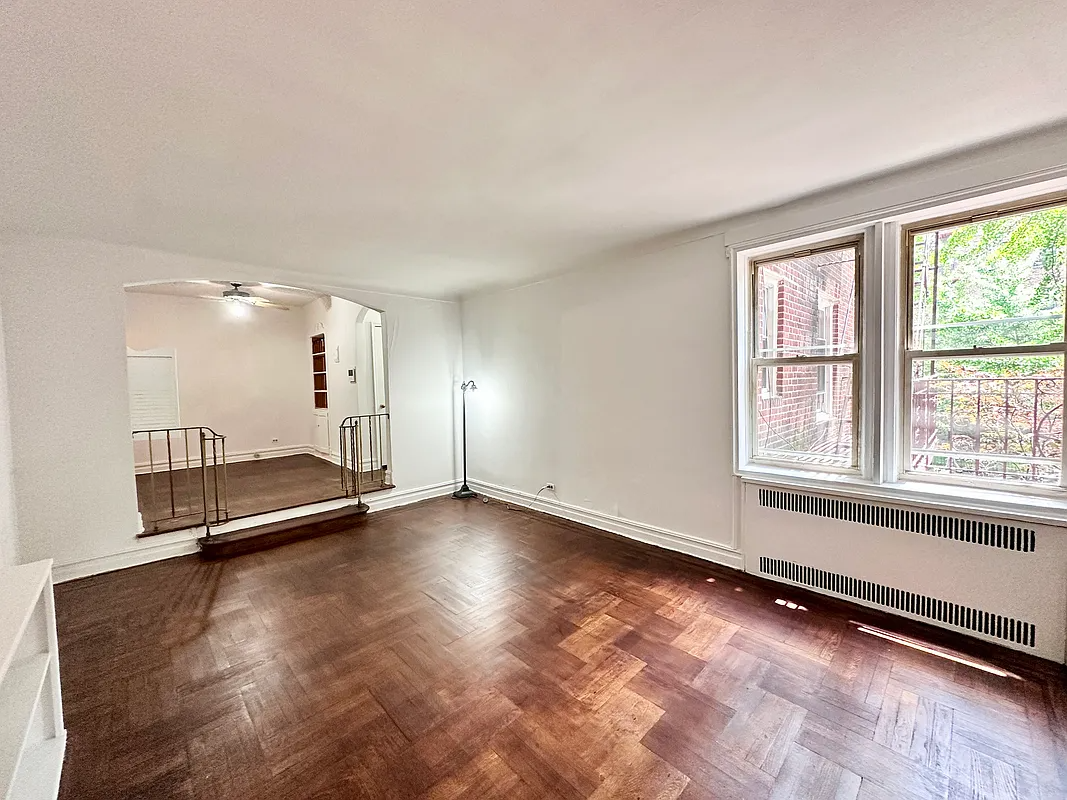MTA Ignores Fiduciary Duty, Approves Revised Yards Plan
If you read the Atlantic Yards Report’s account of yesterday’s MTA hearing that resulted in a 10-2 vote approving the sale of the Atlantic Yards to Forest City Ratner at a drastically reduced price (in both present and expected value terms), it’s hard not to come to the conclusion that either (a) the people that…
If you read the Atlantic Yards Report’s account of yesterday’s MTA hearing that resulted in a 10-2 vote approving the sale of the Atlantic Yards to Forest City Ratner at a drastically reduced price (in both present and expected value terms), it’s hard not to come to the conclusion that either (a) the people that sit on the MTA Board ain’t too bright or (b) the fix was most certainly in. Or (c) both. The heart of the MTA’s fallacious position was encapsulated by board member Jeff Kay’s defense of the new pricing structure: The market is what the market is, declared board member Jeff Kay.” Um, except that the board rejected a higher price from Extell back in 2005 and has refused to either get a current independent appraisal or solicit new offers to find out what the market price really is. (In fact, at yesterday’s hearing Daniel Goldstein made an offer on behalf of DDDB of $120 million for the property over 12 years—the details of the offer are posted here.) The board ignored Assemblyman Jim Brennan who tried to remind the MTA that it is legally bound not to squander its assets; he also pointed out that the Public Authorities Accountability Act requires an independent appraisal. Council Member Letitia James pointed out the irony that taxpayers bailed out the MTA and now the MTA is bailing out a private developer, adding How can you sell off a valuable public asset without considering market value? Goldstein also said that it’s likely his group will sue the MTA for its actions. Anyway, there’s no point in rehashing the entire play-by-play here. Go read the Atlantic Yards Report’s detailed account and watch the video above.
MTA Approves Deal 10-2 Despite Warnings [AY Report]
Atlantic Yards Project Enters a Crucial Period [NY Times]
Bailout! State Cuts New Deal to Save Stalled Yards [NY Post]
MTA Signs Off on Sweet Atlantic Yards Deal [NY Daily News]
MTA Approves New Deal for Atlantic Yards [WNYC]





I just did a quick calculation. For someone who really knows how to crunch numbers, my apologies. But here’s a napkin calculation.
Vanderbilt railyards = 8.4 acres = 365,904 sq. ft.
210 Prospect Place = 3,633 sq ft sold recently for $619/sqft
365,904 x $619 = $226,494,576
210 Prospect Place is less than a half mile from Vanderbilt Yards. While 210 is a nice one-family property, it obviously doesn’t have the challenges of building over a working railyard. On the other hand, it doesn’t have the zoning to build a forty+ story building.
Ratner’s $20 Million initial payment for the Vanderbilt Railyards is 8.9 times the value of 210 Prospect Place, which sold for $2,250,000. Ratner’s yearly payments over the next 22 years would be a little less than the value of 210 Prospect Place.
I’m just trying to put some of these numbers in perspective. So even if the lowball valuation of the Vanderbilt Yards in 2006 was $214.5 million, Ratner got a very good deal. MTA riders got a very bad deal.
If they don’t take the offer, the NYS’s responsibility to get the best price for the tax payer is def. grounds for a law suit. Good luck suing a slick group like the MTA but hey that’s what they told Ghandi about the British Empire.
ITM:
thing is, no property flipper here would have sold it for less than 1/2 someone else was offering. and when that half off bid came up for renegotiation, they sure wouldn’t hold paper with 20% down.
other than that, your point is interesting, but not on point.
ITM- this is true but then you’re equating essentially public property with condos, coops and townhouses which aren’t just privately owned, they aren’t part of infrastructure and their value rests on the market and their perceived desirablity, location and condition.As a public agency the MTA is supposed to follow a number of procedures, overviews, reports, etc. as well as go for the best price. they did little to none of that. DDDB posted a lot of information and certainly enough for anyone to evaluate prior to actually building. Evaluation after the fact is rather pointless.
All things considered, including the fact of public financing for FCR, it becomes pretty obvious that there was a back room deal for a project of this size and purported importance. 100 million isn’t even close to what they wanted to buy the air rights for in Manhattan when they were considering a truly misbegotten stadium on the West side a few years ago.
I am all for transparency and credibility, it is one of the few equations that can solve the confidence issue. And I believe both of those important variables are not very real at the moment as it pertains to the process that has taken place. That said, the impression I walk away with after reading the posts above is that the seller, which is effectively the MTA, the public and the majority of posters on this piece did not get enough in exchange for giving FCRC the right to build over the rail road tracks. Even though Extell may have offered more total $s does anyone actually know enough about the particulars of their offer so a conclusion about what the comparable value to the public might be? What I find interesting with this episode, considerate of the market transformation that is occuring, is that the “public” (represented here by the majority of posters) thinks their asset (the rail yard) is worth more than the buyer does. This is obviously counter to the position the majority of posteres take when it comes to the evaluation of the privately owned condos, co-ops and townhouses that appear on this site and are subjected to the “reader appraisal” test. That’s all I am saying.
“Why don’t Brooklynites ban together to make an offer for the yards?”
They did and the MTA paid no attention, just like they did when Extell outbid Ratner in 2005.
The DDDB offer for the yards to build a project using the UNITY Plan framework was firm offer and still stands. The details presented to the MTA Board are here:
http://dddb.net/php/latestnews_Linked.php?id=2145
Extell bid twice what Ratner bid but the MTA passed up the money and raised our fares!
ITM:
yes my quick math sucks, just like my typing. in my head i was thinking 10 stories on average across the property. that gets you to $10 per buildable square foot. i think that that goes for at least $100, if not $150 nowadays.
so it is still at 7-10% of the FMV.
and how much infrastructure will be necesary to build the yards over and above what as to be necessary to build the skyscrapers?
when i see a legitimate public document that identifies this then the MTA will have information to do its job.
declaring there is no market isnt enough. again, count me in with the privately funded arena with reasonable housing/office/open space. just like the packers.
ITM- but the rail yards are not the kind of real estate you hold or sell for investment. The railyards are part of the infrastructure so in one sense you could say they are priceless. It wouldn’t matter if something was built over them or not- they are there because they are integral and necessary to the subway and rail system. If they never sold the air rights, the MTA would still have to hold on to them.
The MTA didn’t want an appraisal because they never intended to have competitive bids. They paid it lip service but they had already decided to give it to ratner. Selling air rights was basically an icing on the cake deal- and as a public agency, their responsibility was to the public. But they decided they should do a favor for Ratner. The whole thing is wrong on all counts.